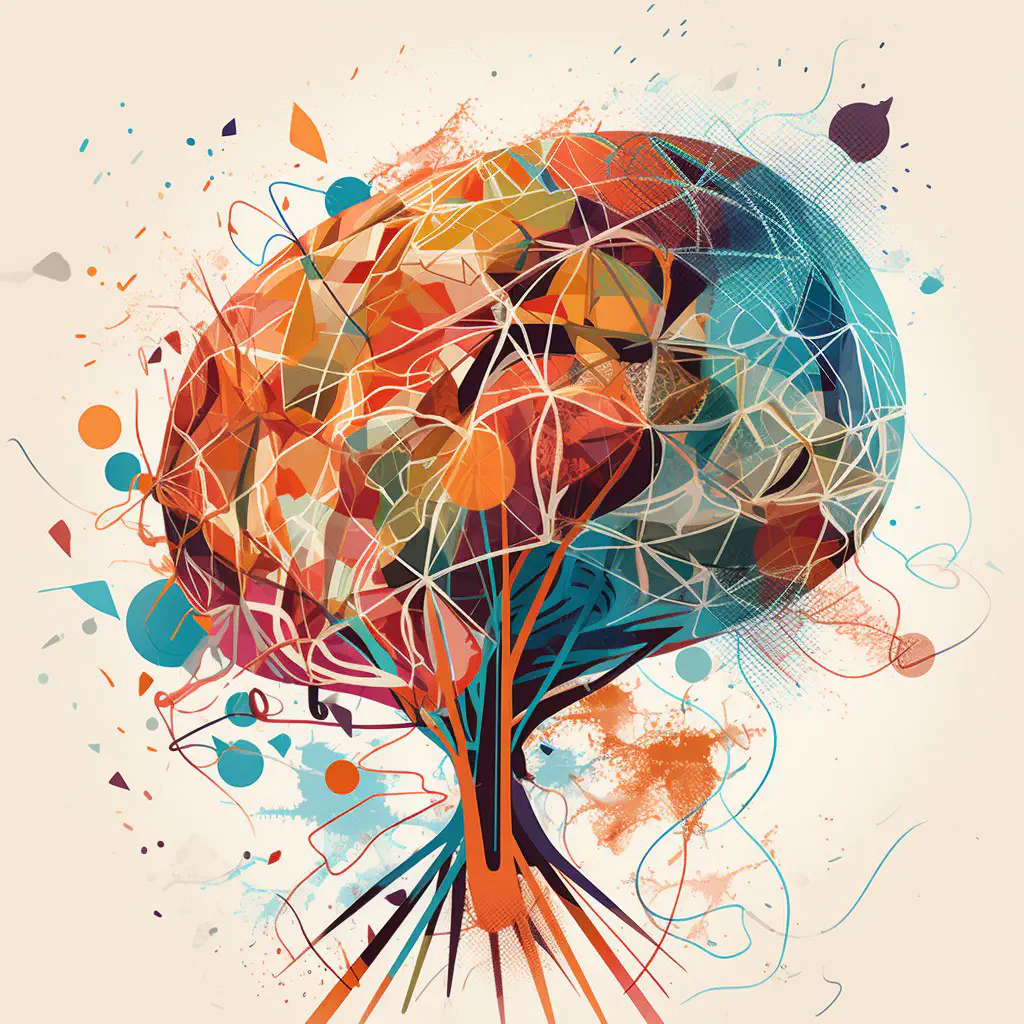
What is visual thinking?
Visual thinking is a cognitive process that involves using images, diagrams, and other visual aids to enhance problem-solving, communication, and learning. It is a powerful approach that taps into the brain’s ability to process images and patterns to facilitate new insights and connections.
Visual thinking is not just for artists or designers; it is a skill that anyone can develop and apply in their personal and professional lives. Whether you are exploring complex topics, developing new ideas, or solving problems, visual thinking can help you see things from different perspectives and generate innovative solutions.
At its core, visual thinking is about using the power of visual language to enhance our thinking processes and communication skills. According to Dan Roam, author of “The Back of the Napkin: Solving Problems and Selling Ideas with Pictures,” visual thinking is about:
“Turning the messy, complicated, and confusing into something clear, simple, and understandable.”
The science behind visual thinking
Visual thinking is not just a trendy buzzword; there is a growing body of scientific evidence that supports the benefits of using visual aids to facilitate learning, communication, and problem-solving.
Research has shown that the human brain is wired to process visual information much faster and more efficiently than text or numbers. In fact, studies have found that the brain can process visual information up to 60,000 times faster than text, making visual thinking a powerful tool for enhancing cognitive processing and memory retention.
Visual thinking is also a powerful tool for unlocking creativity and facilitating innovation. By tapping into the brain’s visual processing centers, visual thinking can help us see patterns and make connections that we might miss with words alone.
Conclusion
Visual thinking is a valuable tool for anyone looking to enhance their problem-solving, communication, and creativity skills. Whether you are a teacher, business professional, or creative thinker, incorporating visual aids into your thinking and communication processes can help you achieve your goals and bring your ideas to life. So, why not give visual thinking a try? You might be surprised at how transformative it can be!
The Benefits of Visual Thinking
Visual thinking offers a wide range of benefits that can help you in both personal and professional life. Here are some of the most significant advantages:
1. Improved Communication Skills
Visual aids make it easier to communicate ideas in a way that others can understand. When you use visual aids, you can bypass language barriers and communicate ideas effectively. Visual thinking also helps you simplify complex concepts, making it easier for others to grasp and retain information.
2. Increased Creativity
Visual thinking can help you unlock your creative potential by allowing you to think outside the box. With visual aids, you can explore new ideas and approach problems from different perspectives. Visual aids can help you see connections and patterns that could be missed when using words alone, leading to more creative solutions.
3. Better Memory Retention
Studies have shown that we are more likely to remember visual information than text alone. Visual aids are easier to remember and recall later, making it a useful tool when learning or presenting information. Visual aids can help you retain information and communicate effectively.
4. Improved Problem-Solving Skills
Visual thinking can help you see connections between seemingly unrelated concepts, leading to more in-depth thinking and more effective problem-solving. With visual aids, you can break down complex problems into smaller components, making them easier to solve. Visual thinking can also help you identify patterns and relationships that are not immediately apparent.
“Visual thinking is not only about seeing with your eyes but also about seeing with your mind. It enables you to connect the dots and come up with creative solutions that would have otherwise been missed.” - Dina Argov
In conclusion, visual thinking is a powerful approach to communication and problem-solving that offers many potential benefits. It can help you unlock your creativity, improve memory retention, and enhance problem-solving skills while simplifying complex concepts. Incorporating visual aids into your thinking and communication processes can help you bring your ideas to life and make them more memorable and impactful. With the above benefits, there’s no reason not to start exploring the world of visual thinking today!
How to Get Started with Visual Thinking
Are you ready to start incorporating visual thinking into your problem-solving and communication processes? Here are some tips to help you get started:
-
Start Sketching: It can be intimidating to pick up a pencil and start drawing, especially if you don’t consider yourself an artist. However, sketching out your ideas and thought processes is one of the most effective ways to incorporate visual thinking into your work. Don’t worry about creating a masterpiece – the purpose of this exercise is to visualize your ideas in a more tangible way. Start with simple sketches, and don’t be afraid to experiment with different styles and approaches.
-
Use Mind Maps: Mind maps are a popular visual thinking tool that can help you organize thoughts and ideas around a central theme. A basic mind map consists of a central idea in the middle of a page, with branches extending outwards from the main topic. Each branch represents a related subtopic, with additional branches extending outwards as needed. Mind maps can be created using pen and paper, or using specialized software like MindMeister or Coggle.
“Mind maps can help you to break down complex problems into smaller, more manageable pieces. They allow you to see the big picture while also exploring the details and connections between different ideas.” - Tony Buzan
- Experiment with Different Visual Aids: Visual thinking is all about finding the right tool for the job. There are many different visual aids to choose from, including diagrams, flowcharts, infographics, and more. Depending on your needs and preferences, certain tools may be more effective than others. For example, if you’re trying to illustrate a process or sequence of events, a flowchart may be the best option. On the other hand, if you’re trying to convey complex data or statistics, an infographic may be more effective.
“Visual thinking is not about replacing words with pictures. It’s about finding the best way to communicate your ideas in a way that others can easily understand.” - Dan Roam
- Practice, Practice, Practice: Like any skill, visual thinking takes practice. Don’t be discouraged if your first attempts aren’t perfect – the more you practice, the better you’ll become. Try incorporating visual aids into your everyday work, whether it’s taking visual notes during a meeting or creating a mind map to brainstorm new ideas. Over time, visual thinking will become a natural and intuitive part of your problem-solving and communication processes.
In conclusion, incorporating visual thinking into your work can lead to improved communication skills, increased creativity, better memory retention, and improved problem-solving skills. By starting with simple sketches, using mind maps to organize your thoughts, experimenting with different visual aids, and practicing regularly, you can unlock the power of visual thinking and take your work to the next level.

